"Cherishing Little Steps - A Haven for Baby and Family Journeys"
Car Seat Safety for Babies
So, you’ve become a parent and now you’re ready to tackle the wild world of car seat safety for your precious little bundle of joy. Well, buckle up, because this guide is here to help you navigate the ins and outs of keeping your baby safe on the road.
From choosing the right car seat to properly installing it, adjusting those harness straps, and even surviving those long car rides, we’ve got you covered.
We understand that you want the best for your baby, and that’s why we’re here to provide you with all the information you need to make sure they’re comfortable and secure every time you hit the road.
So, let’s dive in and get started on this journey of car seat safety together.
Key Takeaways
- Proper car seat safety reduces the risk of injury or death in car accidents.
- Rear-facing car seats protect fragile neck, spine, and head.
- Ensure tight fit and proper strap tightness for maximum safety.
- Regularly inspect and maintain car seats for optimal performance.
Importance of Car Seat Safety
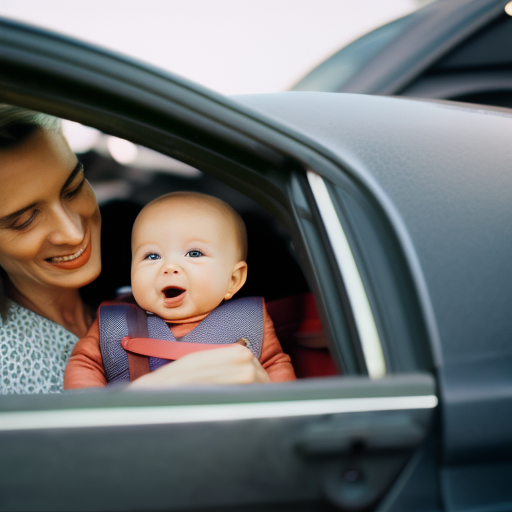
Why is car seat safety for babies so important?
Proper car seat safety is crucial for the protection and well-being of your precious little one. Not only is it a legal requirement in most places to have your baby securely strapped in a car seat, but it also significantly reduces the risk of injury or even death in the event of a car accident.
Car seat laws vary by jurisdiction, but they all have one thing in common: they prioritize the safety of infants and children. By following these laws, you aren’t only avoiding potential fines but also ensuring that your baby is as safe as possible on the road.
Unfortunately, many parents make common car seat mistakes that compromise their child’s safety. These mistakes can range from using an incorrect car seat for their child’s age and size, to not properly securing the car seat in the vehicle. It’s essential to familiarize yourself with the specific guidelines and recommendations for your car seat model and your child’s age and weight to avoid these errors.
Choosing the Right Car Seat
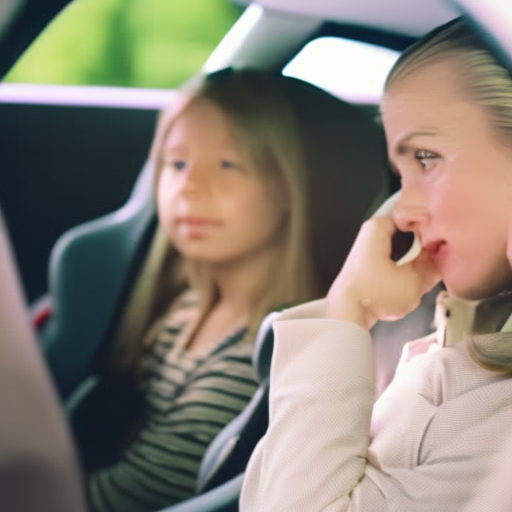
When selecting a car seat for your baby, consider their age, weight, and height to ensure proper protection. There are different types of car seats available in the market, each designed to cater to specific stages of your baby’s growth. It is crucial to choose the right car seat that meets your baby’s needs and provides maximum safety. To help you make an informed decision, here is a comparison table outlining the different car seat types and their weight limits:
| Car Seat Type | Weight Limit |
|---|---|
| Rear-facing | Up to 40 lbs |
| Convertible | Up to 65 lbs |
| Forward-facing | Up to 80 lbs |
| Booster | Up to 120 lbs |
| All-in-one | Varies |
The rear-facing car seat is suitable for infants and provides optimal protection for their fragile neck and spine. As your baby grows, you can transition to a convertible car seat, which can be used both rear-facing and forward-facing. Once your child outgrows the convertible seat, a forward-facing car seat provides the necessary support. Finally, a booster seat ensures that your child is positioned correctly with the vehicle’s seat belts until they are ready to use regular seat belts. Remember to always follow the manufacturer’s guidelines and local laws when choosing and installing a car seat for your little one.
Rear-Facing Car Seats: Why They Matter
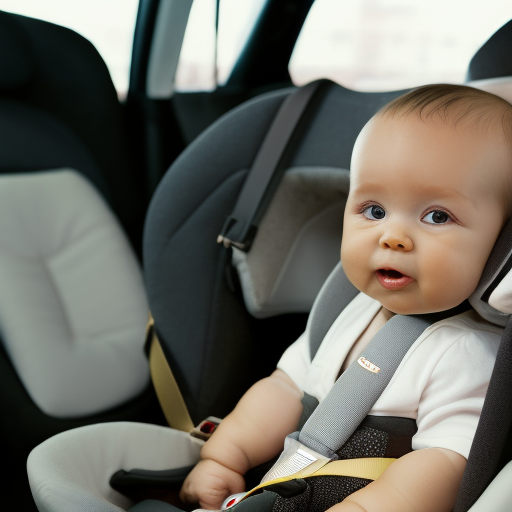
To ensure your baby’s safety in the car, start with a rear-facing car seat. Rear-facing car seats are specifically designed to protect your baby’s fragile neck, spine, and head in the event of a sudden stop or crash.
Here are some reasons why rear-facing car seats matter:
- Enhanced protection: Rear-facing car seats provide the best protection for your baby’s vulnerable body parts, especially their head and neck. The seat’s shell absorbs and distributes the impact forces, reducing the risk of serious injury.
- Proper alignment: Rear-facing car seats support your baby’s natural posture by keeping their head, neck, and spine in alignment. This reduces the strain on their developing body and minimizes the risk of musculoskeletal injuries.
Extended rear-facing car seat:
- Longer usage: Extended rear-facing car seats allow your baby to remain in the safest position for a longer period. It’s recommended to keep your child in a rear-facing position until they reach the maximum height and weight limits specified by the car seat manufacturer.
- Developmental benefits: Research suggests that extended rear-facing can enhance your baby’s cognitive and emotional development. The secure and comfortable position promotes better sleep and reduces anxiety during car rides.
Choosing a rear-facing car seat and opting for extended rear-facing can significantly improve your baby’s safety and well-being on the road. Prioritize their protection by using a rear-facing car seat that meets the necessary safety standards and is appropriate for your child’s age and size.
Installing Your Car Seat Correctly
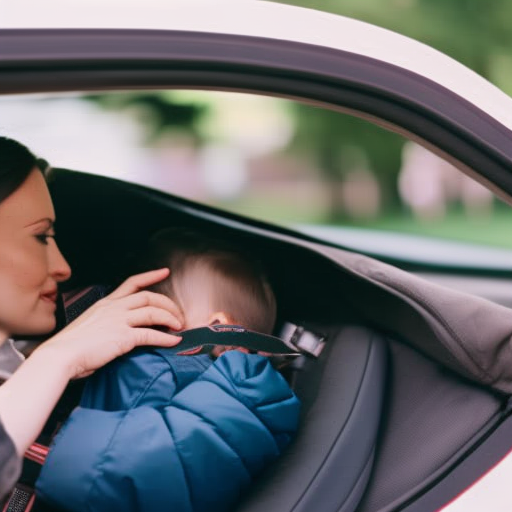
- Ensure proper installation of your car seat for maximum safety and protection. Correct installation is crucial to ensure that your baby is secure and protected in the car. Unfortunately, many parents make common mistakes when installing their car seats, compromising the safety of their little ones. To help you avoid these errors, here are some key points to keep in mind when installing your car seat:
| Common Mistakes | Correct Installation Tips |
|---|---|
| Loose installation | Follow the car seat manufacturer’s instructions carefully and use the appropriate installation method for your specific car seat. Ensure a tight fit by pulling the seat belt or LATCH strap as tight as possible. |
| Incorrect angle | Position the car seat at the correct recline angle according to the manufacturer’s instructions. Use a level indicator or adjuster to ensure the proper angle for your baby’s age and weight. |
| Improper harness placement | Ensure that the harness straps are positioned correctly. For rear-facing seats, the straps should be at or below your baby’s shoulders. For forward-facing seats, the straps should be at or above the shoulders. |
Adjusting the Harness Straps Properly
To ensure your baby’s safety in the car, it’s important to adjust the harness straps properly. The proper strap tightness is crucial to keep your little one secure and protected during a car ride.
Here are some common mistakes in harness adjustments that you should be aware of:
-
Loose straps: One of the most common mistakes parents make isn’t tightening the harness straps enough. Remember, you shouldn’t be able to pinch any excess strap material. Ensure a snug fit that allows only one finger to fit between your baby’s chest and the straps.
-
Twisted straps: Another mistake to avoid is having twisted harness straps. Twisted straps can affect the effectiveness of the harness in a crash, so always check that the straps are flat and not twisted.
In order to provide the utmost safety for your baby, it’s essential to check the straps before every car ride. Make sure they’re adjusted properly and free from any twists or slack. By doing so, you can rest assured that your little one is secure and protected, no matter the journey.
The Right Positioning for the Car Seat
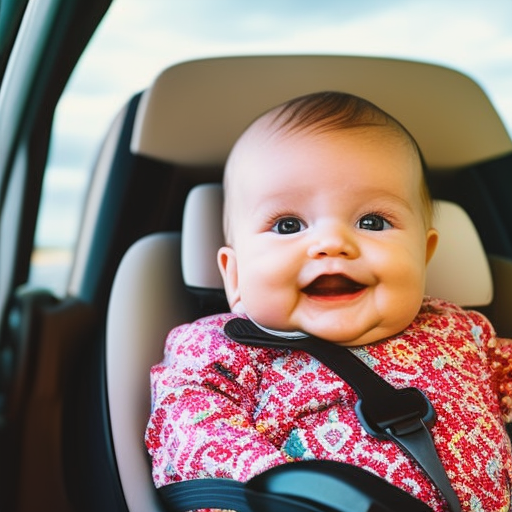
Are you positioning your baby’s car seat correctly for maximum safety? Proper car seat installation and positioning are crucial for ensuring your baby’s safety while traveling in a vehicle. One important aspect to consider is the car seat recline. The recline angle of the car seat is essential for the safety and comfort of your baby. It helps keep your baby’s head from falling forward, which can obstruct their airway and pose a risk of suffocation.
To help you understand the right positioning for your baby’s car seat, here is a table outlining the recommended car seat recline angles based on your baby’s age:
| Age Range | Rear-facing Car Seat Recline Angle |
|---|---|
| Newborn – 2 | 30-45 degrees |
| 2 – 4 months | 30-45 degrees |
| 4 – 6 months | 30-45 degrees |
| 6 months – 1+ | 30 degrees or as indicated by the car seat manufacturer |
It is important to note that these are general guidelines, and you should always refer to the specific instructions provided by your car seat manufacturer. Additionally, make sure to check the car seat’s recline angle indicator to ensure proper installation.
Guidelines for Buckling Your Baby In
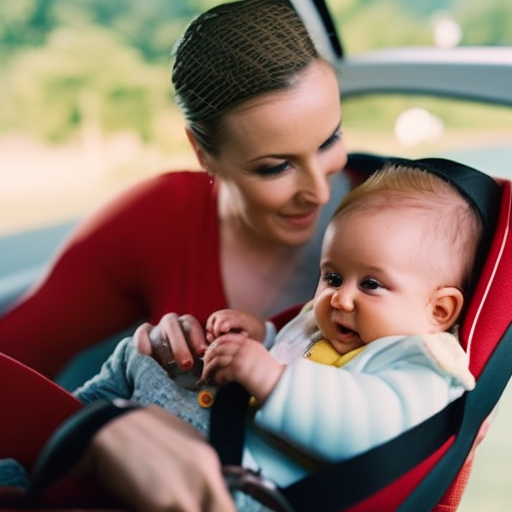
Make sure you always securely buckle your baby into their car seat. This is crucial for their safety during car rides.
Here are some guidelines to follow when buckling your baby in:
-
Use the correct buckle: Ensure that you’re using the appropriate buckle for your baby’s age and weight. There are different types of buckles available, such as the traditional buckle or the quick-release buckle. Choose the one that’s suitable for your baby’s car seat.
-
Position the straps correctly: The straps should be positioned snugly against your baby’s body, without any twists or slack. Make sure they aren’t too tight that they dig into your baby’s skin, but also not too loose that they can slip off. The chest clip should be placed at armpit level, resting on the breastbone.
-
Avoid common mistakes: Some common mistakes to avoid include using bulky clothing or blankets under the harness, as they can affect the fit of the straps. Also, make sure the harness straps aren’t twisted and that the car seat is installed correctly.
Proper Use of Chest Clips and Buckle Clips
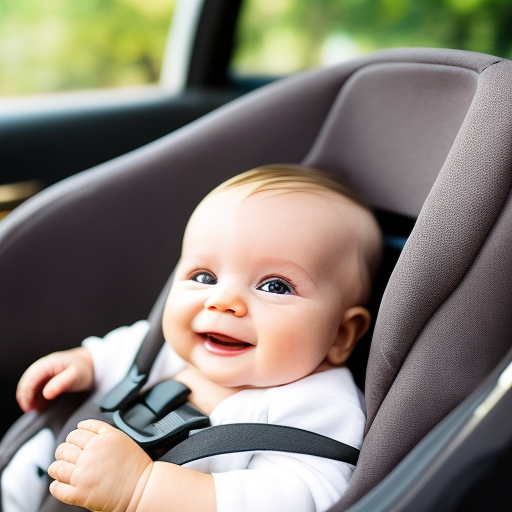
Securely fasten the chest clip and buckle clip to ensure your baby’s car seat is properly secured. The chest clip is an important safety feature that helps keep the shoulder straps in the correct position. It should be positioned at armpit level, right in the center of your baby’s chest. Make sure it’s snug, but not too tight, to allow for comfort and proper movement.
When it comes to the buckle clip, there are a few things to keep in mind. Firstly, always ensure that the buckle is properly latched and securely locked into place. You should hear a click sound when it’s properly secured. Secondly, make sure the straps are threaded correctly through the buckle slots. The straps should lie flat and not be twisted or folded.
Proper use of the chest clip and buckle clip is crucial for your baby’s safety during car rides. These clips help prevent your baby from sliding out of the car seat and reduce the risk of injury in the event of a sudden stop or collision. Remember to check these clips regularly to ensure they remain securely fastened.
Safety Tips for Long Car Rides
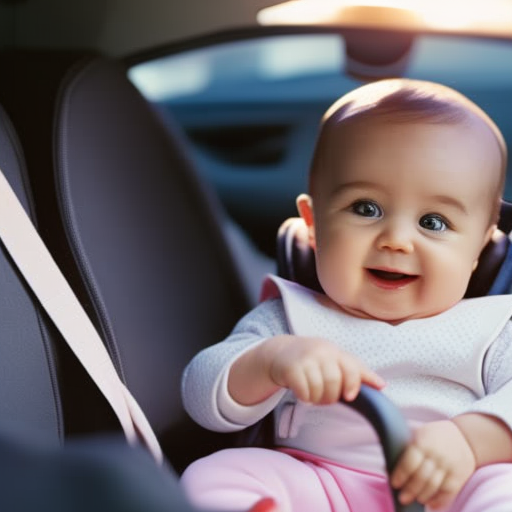
To ensure your baby’s comfort and safety during long car rides, it’s important to prepare for the journey by considering a few key factors. Here are some safety tips to keep in mind:
-
Choose the right car seat: Make sure your baby is in a car seat that’s appropriate for their age and size. A rear-facing car seat is recommended for infants and young children.
-
Use car seat accessories: Consider using car seat accessories such as head supports and seat belt covers to provide extra comfort and support for your baby during the ride. These accessories can help prevent your baby’s head from slumping forward and keep them secure in their seat.
-
Entertainment for babies: Long car rides can be challenging for babies, so it’s important to keep them entertained. Pack some toys, books, and soft music to keep your little one engaged and happy during the journey. You can also consider using a car seat mirror, which allows your baby to see their reflection and provides visual stimulation.
-
Take breaks: It’s important to take frequent breaks during long car rides to give your baby a chance to stretch, feed, and have a diaper change. Plan your journey accordingly, and make sure to find safe and convenient places to stop along the way.
Keeping Your Baby Comfortable and Safe

To ensure your baby remains comfortable and safe throughout the car ride, it’s important to take a few additional precautions. In addition to following the safety tips discussed earlier, there are some baby car seat accessories that can enhance your little one’s comfort and safety.
These accessories include head and neck support pillows, seat belt covers, and car seat covers. Head and neck support pillows provide extra cushioning and support for your baby’s delicate head and neck. They help to prevent any discomfort or strain during the ride. Seat belt covers are designed to protect your baby’s sensitive skin from irritation caused by the seat belt. They also provide extra padding for added comfort.
Car seat covers not only protect your baby’s car seat from spills and stains, but they also provide an extra layer of cushioning for your baby’s comfort. They’re easy to install and can be easily removed for cleaning.
It is important to note that while these accessories can enhance your baby’s comfort, it’s essential to check if they comply with the car seat safety laws in your area. Always make sure that the accessories don’t interfere with the proper installation and functioning of the car seat.
Regular Maintenance and Inspection of Car Seats
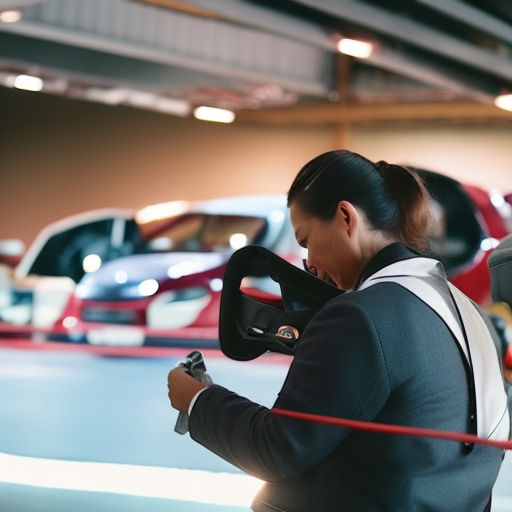
Regular maintenance and inspection of car seats is crucial to ensure the ongoing safety and effectiveness of your baby’s car seat. By regularly maintaining and inspecting your baby’s car seat, you can identify any potential issues or concerns before they become a problem. Here are some important steps to follow:
-
Cleaning: Regularly clean your baby’s car seat using mild soap and water. Avoid using harsh chemicals or abrasive cleaners, as they can damage the seat’s materials. Be sure to remove any crumbs or debris from the seat and straps, as these can affect the seat’s performance.
-
Checking for Wear and Tear: Inspect the car seat for any signs of wear and tear, such as frayed straps, loose stitching, or cracked plastic. These can compromise the seat’s ability to protect your baby in the event of a collision. If you notice any damage, contact the manufacturer for guidance on repair or replacement.
-
Adjusting Straps and Buckles: Ensure that the harness straps are properly adjusted to fit snugly against your baby’s body. Check that the buckles are securely fastened and functioning correctly. Loose straps or faulty buckles can put your baby at risk in the event of an accident.
-
Following Manufacturer’s Instructions: Read and follow the manufacturer’s instructions for your specific car seat model. They’ll provide guidance on how to properly maintain and inspect your baby’s car seat, as well as any recommended maintenance schedules.
Regular maintenance and inspection of your baby’s car seat is crucial for their safety. By following these steps and staying vigilant, you can help ensure that your little one remains safe and secure during every car journey.
Transitioning to a Forward-Facing Car Seat
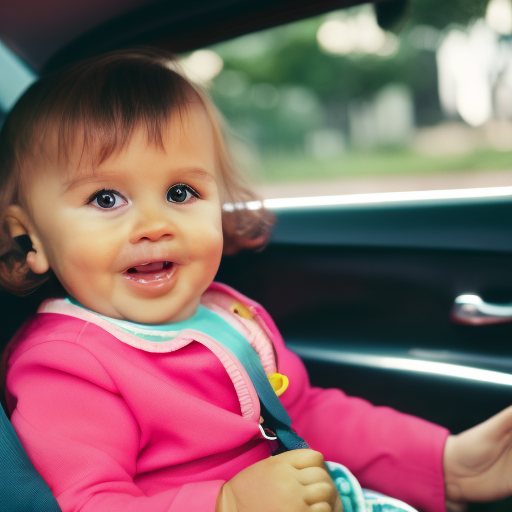
When your baby reaches the appropriate age and weight, it’s time to transition them to a forward-facing car seat. This is an important milestone in your child’s car safety journey. A forward-facing car seat provides more protection and support for your little one as they continue to grow and explore the world around them.
To help you understand the transition process, here is a table outlining the general guidelines for transitioning to a forward-facing car seat:
| Age Range | Weight Range | Requirements |
|---|---|---|
| 1 year to 4 years | 20 to 65 pounds | Must be able to sit upright unassisted |
| Should have reached the height limit | ||
| of the rear-facing car seat |
Before making the switch, make sure to carefully read the manufacturer’s instructions for your specific car seat model. It’s crucial to follow these guidelines to ensure proper installation and maximum safety for your child.
When installing the forward-facing car seat, ensure that the seat is securely attached to the vehicle’s seat using the seat belt or LATCH system. Double-check that the seat is snug and doesn’t move more than an inch when tested at the base.
Frequently Asked Questions
Are There Any Specific Weight or Age Guidelines for Transitioning From a Rear-Facing Car Seat to a Forward-Facing One?
When it comes to transitioning from a rear-facing car seat to a forward-facing one, weight and age guidelines are important. They help ensure your baby’s safety and comfort during car rides.
How Often Should I Check and Adjust the Harness Straps on My Baby’s Car Seat?
You should regularly check and adjust the harness straps on your baby’s car seat to ensure their safety. It’s like tightening the strings of a precious instrument, keeping them snug and secure during the ride.
Can I Use a Car Seat That Has Been Involved in a Previous Accident?
You should never use a car seat that has been involved in a previous accident. There are safety concerns with using a second hand car seat, as it may have damage that is not visible.
Are There Any Additional Safety Measures I Should Take When Traveling With My Baby During Extreme Weather Conditions?
You might think that extreme weather is no big deal when it comes to traveling with your baby, but think again! It’s crucial to take extra safety precautions, especially when it comes to your little one’s car seat.
What Should I Do if My Baby Is Too Big for Their Current Car Seat, but Not yet Ready to Transition to a Booster Seat?
If your baby is too big for their current car seat but not ready for a booster seat, there are other transitioning options available. Look into alternative car seats that are designed for larger infants and toddlers.
Conclusion
In conclusion, car seat safety is of utmost importance when it comes to protecting our little ones on the road.
Did you know that using a rear-facing car seat reduces the risk of injury in a car crash by 71% for infants?
This statistic should serve as a powerful reminder to always prioritize the proper installation and usage of car seats to ensure the safety and well-being of our precious babies.
Remember, their safety is in our hands.


